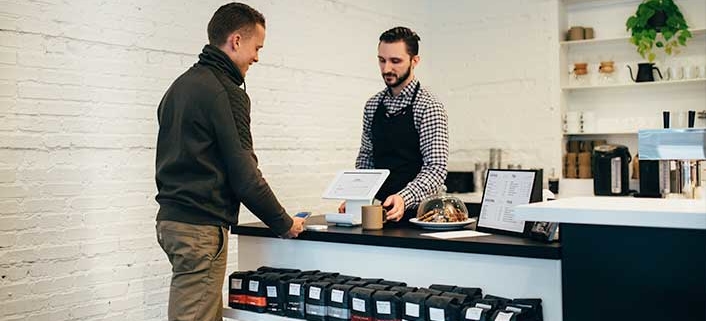People want an ultra-low-friction mobile payment experience that says yes to a lickety-split transaction, with a minimum of taps and without the extra hoo-ha.
Pay on the go, wherever you are, is the catchphrase of today. This is the inevitable reality so let’s take a second to untangle some of the pitfalls and opportunities for banks to get on top of this development.
In-app purchasing, person-to-person payments and e-wallets are all results of consumers’ relentless demand for instant access to their money. Needless to say, this is why the most convenient and readily available device of them all – the smartphone – is becoming the payment channel of choice. Sending money to friends and family, shopping or doing day-to-day things like paying a bill inside various apps are all examples of consumer behaviours that are taking off in a phenomenal way.
“Tap-sign-done”
It’s no longer just well known online payment services like PayPal, Google Wallet and Apple Pay (that have been around long enough to earn trust) that are competing for a piece of the mobile instant payments pie. Thanks to the revised payment services directive (PSD2), the entire payment services ecosystem have entered the race and offer competitive-edge and value-added “overlay” payments that boost consumer instant access. Whether it’s game-changing players like Square, Klarna, Paym and Dwolla or run-of-the-mill banks, the potential success stands and falls with a combination of convenience and security.
The educated guess would be that as long as people can stay secure, they will take the path of least resistance. But convenience will only go so far when it comes to the adoption of mobile payments. Without the underpinning security, this ever-growing trend could halt in mid-stride if consumers don’t trust that their money is a hundred percent secure.
Trust, trust, trust
Even though banks are late to the mobile payment user-convenience party, research shows that consumers still have a much higher level of confidence dealing with their banks, than online platforms and social-media companies when it comes to payments services. This is a slam-dunk advantage that gives banks the chance to stay competitive by drawing from the hard-earned trust they have built with their customers over the years.
As payment innovation has been about striking the right balance between customer convenience and security banks are successively abandoning yesterday’s security methods and have started to evaluate new and more robust alternatives at hand. But bringing about a genuinely effortless mobile user experience and at the same time reach fool-proof security is no easy feat. To begin with, instant payment features radically shortens the time to identify fraud so no matter which way you look at it, you need to invest in extremely secure real-time fraud detection based on strong user authentication. Exceptional user convenience on the smartphone may be the term of the day as it stands, but without up-to-date security tech behind it, it could be good for nothing.
In the near future, those who offer their customers the security and sought-after split-second payment convenience will survive. This is why we have developed Covr, a user-centric mobile security management platform. It will help banks and other financial players to overcome the biggest hurdles in the transition to large scale open banking as it doesn’t require hardware or huge installations costs.
About Covr Security
Covr Security AB, located in Malmo, Gothenburg, Stockholm, Frankfurt and Palo Alto, is a Swedish cybersecurity company. We have developed a next-generation, user-centric mobile security management app for a wide range of heavily regulated digital industries that depend on strong customer authentication and privacy. The Covr app is available both as an off-the-shelf authentication mobile app ready for a quick launch and as a powerful SDK for hassle-free integration into existing mobile applications.



